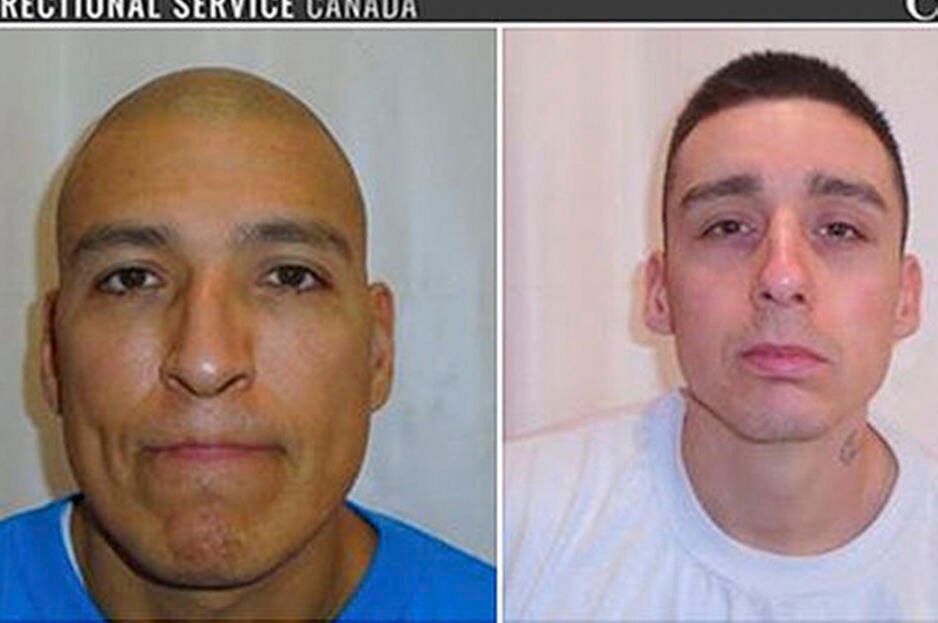Blood from a slain Metchosin man was sprayed onto surfaces or pooled up in several areas of his home.
James Lee Busch and Zachary Armitage are charged with the first-degree murder of Martin Payne after they escaped the William Head prison in 2019.
The court on Friday heard from Staff Sgt. Trevor Knopp, an RCMP bloodstain pattern and crime scene analyst who examined the rural Metchosin home in the wake of the homicide.
The Crown lawyers will have a witness who analyzed the DNA testify in the coming weeks, but they confirmed on Friday that that analysis found all the blood mentioned in Knopp’s testimony belonged to Payne.
Swipe patterns showed a bloody object would be moving from the doorway of the home’s ensuite bathroom toward the toilet and vanity. Payne’s body was found in that bathroom.
“The object was most likely the body of the deceased,” Knopp said.
Swipe patterns were among many types of blood stains explained by Knopp, who was qualified by the court to speak as an expert on the subject.
The trial has already heard that pools of blood were found around the ensuite’s toilet, and Knopp said multiple spatter stains were found around the bathroom. “Spatter” is the result of a force being applied to blood that causes droplets to be exerted through the air and it needs a direct line between the blood source and where the stain lands.
Spatter stains were found on the wall by a towel rack, on the base of the toilet and by the baseboard just inside the bathroom. There were also several transfer stains – where a blood-bearing surface comes into contact with another surface – on the vanity and where shoes left impressions of Payne’s blood on the toilet’s rim.
An area just inside the main bedroom’s entrance had a large amount of blood pooled by the doorway. Knopp said there were hundreds of stains identified on several surfaces at this location – caused by an “impact pattern” where something strikes liquid blood and forms a V-shaped pattern. He said spatter stains from this impact stretched “quite a ways” down the hallway and were also sprayed into the main bedroom.
“The area of origin for that impact pattern would’ve been basically right in the middle of the doorway into the master bedroom,” Knopp said.
When asked about the possible timeline, Knopp said it’s likely the events in the ensuite bathroom likely occurred after the strike near the bedroom’s entrance.
A computer system used to find the origin of blood stains found the source would have been a little more than 38 centimetres off the floor at the time of the strike.
He also found blood transfer stains on both sides of a hatchet and on the hilt of a bowie knife that was found on the counter in another bathroom of his home.
Seventy-five spatter stains were on the walls, furniture and floor in one part of the home’s hallway, where transfer stains were also near some light switches.
“Because we don’t see any stains basically above the level of the lightswitches, that suggests to me that these spatter stains (are) much closer to the floor than a standing person,” Knopp said.
The trial continues in Vancouver next week.
READ: Jury sees items from scene of Metchosin homicide, others found with escaped inmates
jake.romphf@blackpress.ca. Follow us on Instagram. Like us on Facebook and follow us on Twitter.
